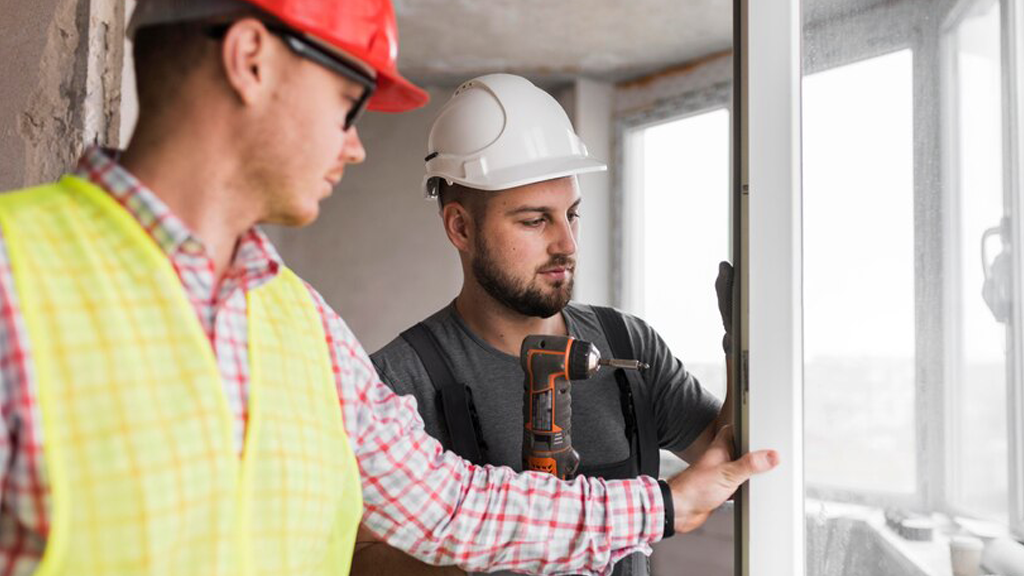Spotting early signs of structural damage in a property is crucial to prevent costly repairs and maintain safety. The following are some important signs to look for:
- Ceiling and Wall Fractures
- Small, hairline cracks are typical results of settling; however, large, expanding, or zigzag cracks may indicate structural issues.
- Shifting foundations can be indicated by cracks around door and window frames and where walls meet the ceiling.
- Sagging or uneven floors
- Sloped, bouncy, or dipping floors could indicate foundation settlement, water damage, or weakened floor joists.
- Doors and windows that don’t close properly or stick
- Foundation movement can cause warping of the frames, resulting in difficulty opening or closing doors and windows.
- Spaces between floors, walls, or ceilings
- Shifting foundations or structural weakness can be indicated by widening gaps between walls and floors or separation between them.
- Walls that are bowing or leaning
- Problems with the foundation, pressure in the soil, or damage from water can all result in the curvature or bulging of exterior or interior walls.
- Mold Growth and Damage from Water
- Mold, leaks, and persistent moisture around walls and ceilings can weaken structures over time, especially if they are ignored.
- Foundation or exterior wall cracks
- Cracks in the foundation that are visible, particularly cracks in the brickwork that are horizontal or stair-step-like, can indicate severe structural stress.
- Roof or chimney issues
- A sagging roof, missing shingles, or a chimney that is leaning could all be signs of structural damage underneath.
- Support Beams That Are Corroded or Rusted
- Rust on metal supports or decayed wood beams in crawl spaces indicate a weakening of the structure.
- Unusual sounds like popping or cracking
- Wall and ceiling pops or sudden loud creaks could be an indication of shifting structures, expanding materials, or foundation stress.
Five Ways to Fix the First Signs of Structural Damage
- Reinforcement and Repair of the Foundation
Fixing Small Cracks: To stop small foundation cracks from spreading further, use injections of epoxy or polyurethane.
Reinforce with Piers or Beams: Professionals may install steel piers, concrete pilings, or helical piers to stabilize the structure if the foundation is sinking or shifting.
- Reinforcing and sealing cracks in walls
Use Mansory patching for small cracks: Apply a patching compound or cement-based filler to small cracks in drywall or masonry. Masonry patching is another option.
Install Wall Anchors or Braces: Carbon fiber straps, steel braces, or wall anchors can help strengthen walls that are bowing or leaning.
- Adjustment of Support and Floor Leveling
Reinforce Floor Joists: Install additional joists or sister boards to strengthen weak sections of the floor if it is sagging.
Slabjacking or mudjacking: Using an injection of a slurry mixture, professionals can lift and level uneven concrete floors.
- Control of Moisture and Waterproofing
Fix Leaks and Improve Drainage: Find and fix any leaks in the roof, plumbing, or drainage that could be harming the foundation.
Install a Waterproofing System: To stop water damage, apply waterproof sealants to the walls of the basement, set up a sump pump, or install proper guttering.
- Reinforcement and retrofitting of the structure
Beams and columns should be replaced or strengthened: Weak or damaged beams should be replaced with stronger materials like engineered wood or steel.
Secure Stones or Loose Bricks: To repair damaged masonry walls, tuckpointing (replacing mortar between bricks) is used.



